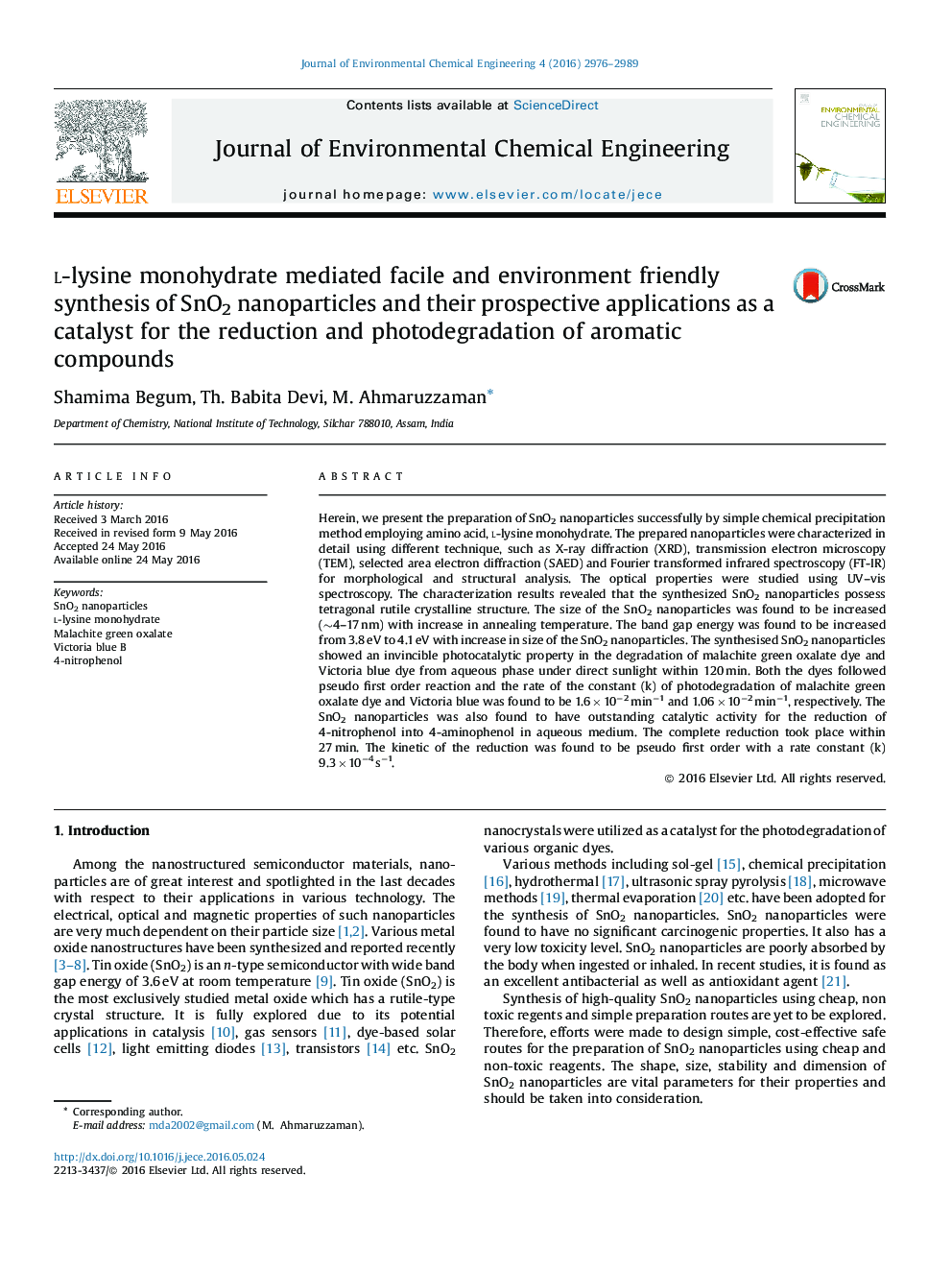| Article ID | Journal | Published Year | Pages | File Type |
|---|---|---|---|---|
| 221564 | Journal of Environmental Chemical Engineering | 2016 | 14 Pages |
Herein, we present the preparation of SnO2 nanoparticles successfully by simple chemical precipitation method employing amino acid, l-lysine monohydrate. The prepared nanoparticles were characterized in detail using different technique, such as X-ray diffraction (XRD), transmission electron microscopy (TEM), selected area electron diffraction (SAED) and Fourier transformed infrared spectroscopy (FT-IR) for morphological and structural analysis. The optical properties were studied using UV–vis spectroscopy. The characterization results revealed that the synthesized SnO2 nanoparticles possess tetragonal rutile crystalline structure. The size of the SnO2 nanoparticles was found to be increased (∼4–17 nm) with increase in annealing temperature. The band gap energy was found to be increased from 3.8 eV to 4.1 eV with increase in size of the SnO2 nanoparticles. The synthesised SnO2 nanoparticles showed an invincible photocatalytic property in the degradation of malachite green oxalate dye and Victoria blue dye from aqueous phase under direct sunlight within 120 min. Both the dyes followed pseudo first order reaction and the rate of the constant (k) of photodegradation of malachite green oxalate dye and Victoria blue was found to be 1.6 × 10−2 min−1 and 1.06 × 10−2 min−1, respectively. The SnO2 nanoparticles was also found to have outstanding catalytic activity for the reduction of 4-nitrophenol into 4-aminophenol in aqueous medium. The complete reduction took place within 27 min. The kinetic of the reduction was found to be pseudo first order with a rate constant (k) 9.3 × 10−4 s−1.
Graphical abstractFigure optionsDownload full-size imageDownload as PowerPoint slide
